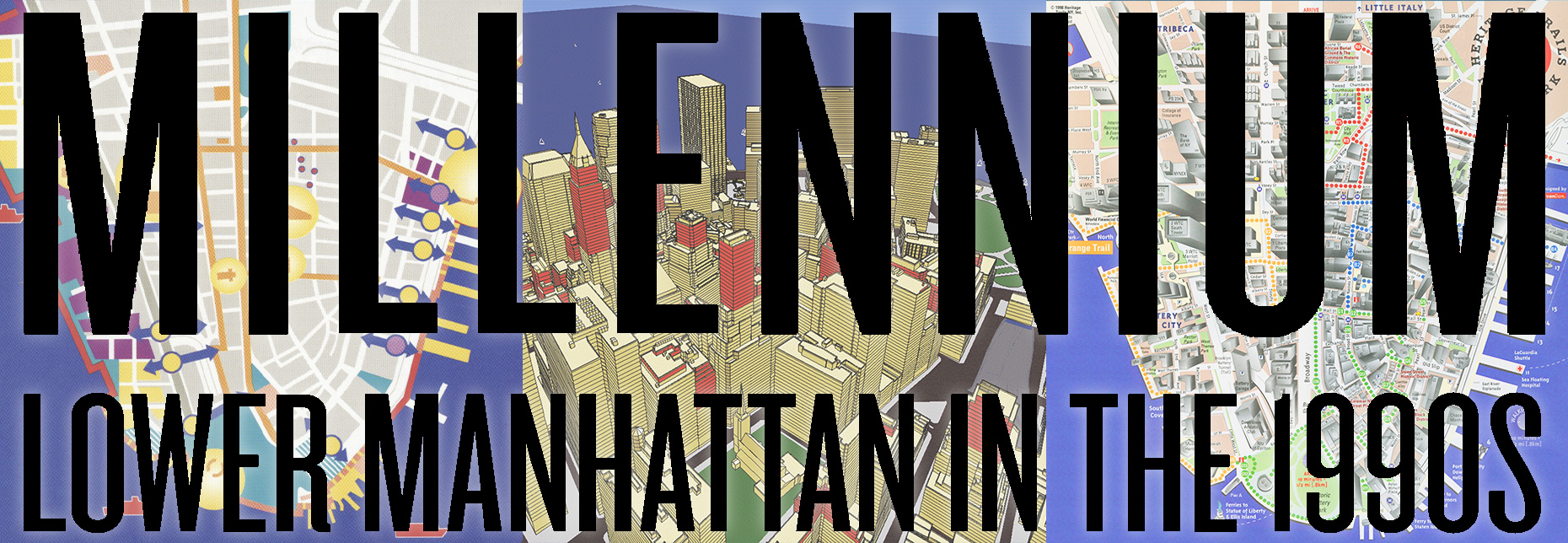The Skyscraper Museum is devoted to the study of high-rise building, past, present, and future. The Museum explores tall buildings as objects of design, products of technology, sites of construction, investments in real estate, and places of work and residence. This site will look better in a browser that supports web standards, but it is accessible to any browser or Internet device.
THE DOWNTOWN ALLIANCE
Founded in 1995, the Alliance for Downtown New York brought the vehicle of the Business Improvement District (BID), already used in Midtown and Times Square, to lower Manhattan. As one of the BID's founders, real estate developer Bill Rudin, phrased the situation in the video shown above: “The Alliance was born out of, basically, fear. We had 30 million feet of vacant space out of an inventory of 100 million feet.” High office vacancy rates downtown compounded problems on the street, including empty storefronts, early closing hours, and increasing crime. Like all BIDS, the Alliance was funded by a small tax assessment on building owners and focused on the business environment by organizing sanitation and security on the streets, as well as marketing, capital improvements, and lobbying the City government on behalf of local business interests. The Alliance was also an active player in turning its district into a more residential neighborhood, as it helped aging skyscrapers convert to residential buildings. Since the 1990s, the Alliance has grown to include other services, such as free transportation, in its rehabilitated district.
The video above, created to celebrate the twentieth anniversary of the founding of the Alliance for Downtown New York, documents the organization’s founding and history. Courtesy of Alliance for Downtown New York.
STONE STREET HISTORIC DISTRICT
 Beyer Blinder Belle Architects & Planners
Beyer Blinder Belle Architects & Planners
Renderings: Kevin Woest
Photographs: Fred Charles
Stone Street, which runs for three blocks from Hanover Square to Broad Street, was one of the colonial city’s first paved streets, laid out by Dutch colonists in the 1600s. It had survived, mostly unchanged, as a low-rise enclave of early nineteenth-century brick counting houses and warehouses. But in the Nineties, its storefronts were rundown and vacant, and the area was plagued with drug dealers.
The young Downtown Alliance undertook a project to restore the buildings and return the street to life as an area of restaurants and retail. In 1996, partnering with the Landmarks Preservation Commission to designate Stone Street as a historic district, as well as with the city's Department of Transportation and Department of Design and Construction, the Downtown Alliance coordinated the Stone Street reconstruction with federal funds and historic preservation tax credits. The city installed a new street bed lined with cobblestones duplicating the street's original paving, as well as laid new bluestone sidewalks, a granite curb, and nineteenth-century style street lamps.
The plans for the restoration were designed by Beyer Blinder Belle, whose drawings, rendered by Kevin Woest, illustrated the goal, as well as documented the “after” photographs here. Today, Stone Street attracts crowds to its restaurants and bars and popular summertime sidewalk cafes.
